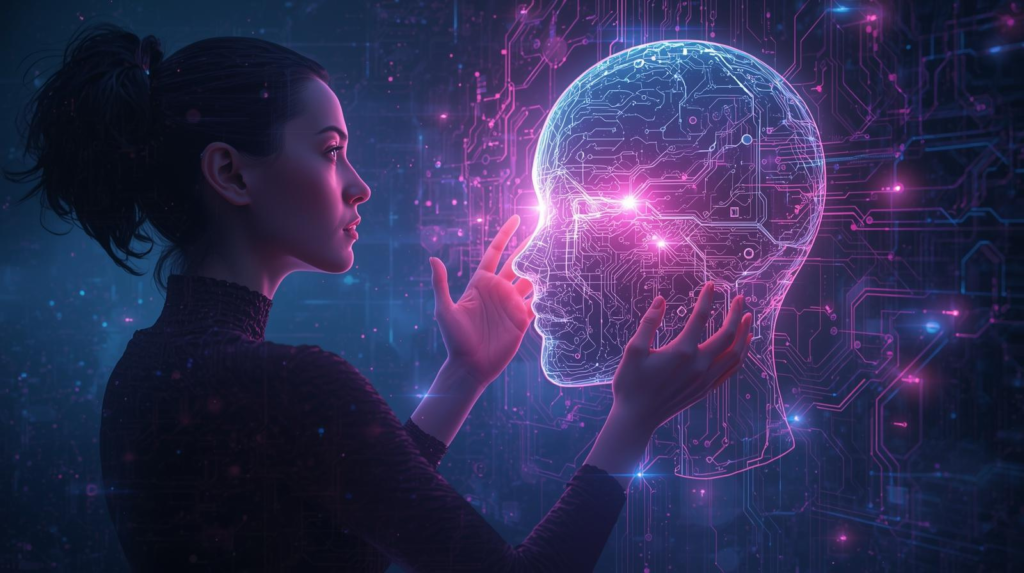
Artificial intelligence often feels magical—AI Whisperers machines talking, writing, and even creating art as if they truly “get us.” But behind the algorithms are real humans. Few people ever ask: who trains artificial intelligence to understand human language and behavior?
At AixCircle, we believe the unsung heroes behind AI deserve recognition. These are the AI training specialists—the data labelers, annotators, and prompt engineers—who quietly shape the way machines learn to respond with empathy, accuracy, and relevance. Let’s step behind the curtain and meet the AI trainers behind the scenes.
Who Trains Artificial Intelligence to Understand Human Language and Behavior?
The short answer: humans do. Machines don’t magically know language or context. They must be exposed to examples, corrected when wrong, and guided—just like a child learning to speak.
- Data Labelers tag images, videos, or text with meaning.
- Annotators teach machines nuance, like whether a sentence is sarcastic or polite.
- Prompt Engineers fine-tune how AI models interpret instructions.
- AI Trainers test and refine model behavior.
These professionals are the answer to who trains artificial intelligence to understand human language and behavior—they act as the “AI whisperers” giving machines a human touch.
The AI Whisperers: The Hidden Architects of Smart Systems
Every powerful AI you interact with—whether it’s ChatGPT, Alexa, or Google Translate—has been shaped by AI training specialists.
- They design structured training datasets.
- They filter harmful, biased, or irrelevant content.
- They simulate real-world scenarios to test AI responses.
Without AI training specialists, large language models would remain raw, unfocused, and error-prone. Their expertise ensures that human training of AI systems results in accuracy, safety, and ethical alignment.
AI Trainers Behind the Scenes: The Unsung Workforce
When we think of AI breakthroughs, we often imagine elite scientists and machine learning experts. But in reality, AI trainers behind the scenes form the backbone of AI evolution.
- Crowdsourced Labelers: Thousands of workers tag millions of images and texts daily.
- Linguists & Psychologists: They help models grasp tone, emotion, and cultural nuances.
- Ethics Reviewers: Specialists ensure building human-like AI doesn’t reinforce harmful stereotypes.
This invisible workforce highlights that AI is not just computer science—it’s a deeply human-guided journey.
Who Teaches AI Models? Humans at Every Step
The process of who teaches AI models is not one-time training—it’s ongoing refinement.
- Raw Data Collection: Billions of documents, photos, and videos are gathered.
- Annotation & Labeling: Humans assign meaning—what’s a cat, what’s sarcasm, what’s offensive.
- Training Runs: Algorithms absorb these patterns.
- Testing & Feedback: AI trainers check accuracy, tone, and relevance.
- Continuous Learning: Prompt engineers and specialists fine-tune the AI with new data.
So, when you ask Siri a question or chat with an AI, remember—dozens of unseen humans helped teach AI models to respond naturally.
Role of Prompt Engineers in Shaping AI
One of the most exciting new careers is the role of prompt engineers.
- They craft questions, commands, and prompts that guide AI outputs.
- They test different phrasing to improve accuracy.
- They help companies build smarter chatbots, assistants, and content systems.
Think of prompt engineers as translators between humans and machines. They ensure that human training of AI systems produces responses that feel natural and useful.
Human Training of AI Systems: Why It Matters
Machines may be powerful, but without human guidance, they risk being biased, unsafe, or simply wrong. Human training of AI systems is vital because:
- Bias Removal: Humans correct unfair patterns AI may pick up.
- Context Sensitivity: Humans teach emotional nuance—like when a joke is appropriate.
- Ethical Boundaries: Trainers decide what an AI should or should not say.
This balance between automation and human oversight ensures that building human-like AI doesn’t come at the cost of trust or safety.
Building Human-Like AI: A Team Effort
The dream of building human-like AI depends less on raw computing power and more on human empathy and cultural awareness.
- Tone: Is the AI friendly, professional, or empathetic?
- Emotion Recognition: Can the AI detect frustration or happiness?
- Cultural Sensitivity: Does it avoid stereotypes across global contexts?
All these elements are shaped by people who train, test, and fine-tune AI behavior. This is what makes today’s AI systems feel less robotic and more relatable.
Challenges AI Trainers Face
While fascinating, the job of AI training specialists is not easy:
- Scale: Billions of data points require massive human input.
- Burnout: Labeling repetitive data can be exhausting.
- Ethics: Deciding what’s “fair” or “offensive” is often subjective.
- Privacy: Annotators sometimes work with sensitive content.
Yet, without these professionals, we would not have the sophisticated AI we rely on today.
The Future of AI Training Specialists
As AI evolves, the role of AI training specialists and prompt engineers will expand:
- Personalized AI Trainers: Specialists will tailor models for industries like healthcare, education, and finance.
- AI-Assisted Training: Ironically, AI will help humans train future AI faster.
- Ethics & Governance Roles: New careers will focus on responsible AI monitoring.
The future of building human-like AI lies in collaboration between advanced algorithms and empathetic human oversight.
Conclusion: The Human Touch Behind AI
Every time AI answers your question, recommends a song, or helps you write an email, remember this: who trains artificial intelligence to understand human language and behavior are real people—data labelers, annotators, trainers, and prompt engineers.
At AixCircle, we recognize that AI trainers behind the scenes are as critical as the engineers building the algorithms. They ensure that human training of AI systems produces technology that reflects human values.
In the end, AI is not just about machines learning—it’s about humans teaching. Without these AI whisperers, the dream of building human-like AI would remain impossible.

